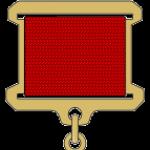Car enthusiasts come up with a lot of things to store a car in the courtyard of the estate, from remodeling a barn to arranging a frame garage, although the solution to the problem clearly lies on the surface - it’s easier and cheaper to build a wooden carport. Today this is the safest and most affordable way to store equipment. A wooden carport can be as good as, and in some ways even superior to, a “warm” box.
Pros and cons of wooden carports
It is clear that in terms of strength and durability, a wooden structure is inferior to metal or brickwork, and this is the most significant drawback of such solutions. But it is easy to fix and mostly compensated for if modern protection technologies are used. Therefore, the right choice of design and special processing can make wooden carports no less durable.
If we list the positive aspects, there will be many more of them:
- A carport made of wood will cost less than a metal one, even taking into account the costs of additional wood processing, the total construction estimate will be 30-35% of the cost of the welded structure;
- Most of the work can be done on your own. Wooden parts are easier to process and install on a frame, cut, cut, drill, and assemble into a finished structure;
- There is a real opportunity to make a carport made of wood beautiful, warm and comfortable.
Even if this is a building for a summer house or a country house, the appearance of a beautiful canopy will certainly improve the appearance of the estate.

For your information! If you believe the statistics, most motorists prefer wooden carports. They are lighter than steel, do not require such a massive base for the foundation and do not create rain from condensation drops on an early autumn morning.
It is quite possible to convert a wooden carport for storing a car into a place for temporary storage of things and agricultural equipment, or you can simply use it for evening gatherings in the country.
Types of wooden carports
It is clear that every car owner prefers to choose the type and design of carport that, in his opinion, is most convenient for everyday use and does not require a radical redevelopment of the area in front of the house.
Requirements for a carport
But still, the correct selection of a protective structure for the machine and its location on the site remains the main problem of construction. Choosing a wooden carport for a country house should take into account additional factors. After all, this is not a gazebo or a covered terrace for relaxation, and the conditions for storing a car differ from those required for a comfortable pastime.
The design of a wooden carport must satisfy three main conditions:
- The site for the protective canopy should be built with a slight drainage slope, with gutters to drain water. There should be no puddles left under the machine, even after the heaviest rains, and the draining water should not fall on the wooden posts of the canopy;
- Drops of water flowing from the slopes must not fall on the machine. The slopes of the canopy must be large enough so that the wind does not blow moisture from the roof under the roof and onto the lining of the car;
- The wooden canopy should be positioned on the site in such a way that the space under the roof is constantly blown by a slight breeze.
The last requirement is the most important for ensuring the safety of the machine, therefore wooden sheds cannot be built in the blind corners of the site, surrounded by bushes or, even worse, lined with transparent plastic, meshes and slatted grilles.
For your information! Sometimes car owners install carports on wooden structures with a polycarbonate roof. In this case, you can only use honeycomb stamps with an ultraviolet protection function, otherwise the wood, like the rubber parts of a car, will quickly fail.

The techniques that are used to equip gazebos and terraces are not used in carports. For storing a car, it is important that there is no moisture under the roof, dryness and good ventilation, which also affects the durability of the wooden roof structure. The better the wood of the carport frame is blown and ventilated, the more durable the building will be.
Types of carports
Traditionally, the selection of a suitable option begins with an assessment of already implemented wooden carport projects. This way, you can get useful ideas from designing the frame for your car, which is easier than planning and designing the layout from scratch.

Several types of hanging structures are best suited for storing the machine:
- Classic gable version with metal, wood or stone supports;
- Arched arc roofs made of transparent polycarbonate on wooden posts, reinforced with cross beams;
- Flat canopies on monoposts, such schemes are used as extensions to a house or utility block on the site.
In each specific case, you have to understand and analyze the design in order to understand why this or that option for storing the machine is interesting.
Photos of wooden carports (select photos)
The main advantage of using wood is its versatility. It doesn’t matter what project is chosen for the canopy, thanks to the wooden frame it will always look very presentable.

You can build a flat roof on a wooden mono-support, it will turn out unusual and interesting, although it is not very convenient for a car.

For lovers of unusual design, it is quite possible to create a roof on wooden curved beams with arc struts.

A parking space for a car with a wooden chalet-style canopy looks good.

For lovers of the classics, parking under arched polycarbonate roofs on wooden arches is suitable. Despite its apparent simplicity, building this type of canopy is not easy, but it protects the car perfectly.



The car is protected from rain, snow and gusts of wind, and its favorable location on the site will ensure reliable travel even in large snowdrifts.
How to make a carport with your own hands from wood
For summer car storage, as a rule, a relatively simple and at the same time practical roofing option is chosen. If you can improvise and come up with your own designs in how the supports are made, then in terms of the wooden roof frame it is still better to use a ready-made wooden carport project than to do it yourself.
Wooden carport project
The roof hanging over the car must be strong, since it will have to withstand a fairly massive layer of snow, and at the same time reliable. The risk of vehicle damage is not as serious as the threat to the health of the driver and passengers. Therefore, the best option would be to order a ready-made drawing of a gable carport made of wood from specialists, or use the dimensions and materials shown in the diagrams and photos below.

The project uses a gable roof on eleven pairs of rafters covered with ondulin or metal tiles. Unlike flat and single-slope wooden carports, this gable version is not afraid of gusts of wind and heavy snowfalls, which means that the carport can be located in a place convenient for a car to enter.
In addition, the powerful rafter system and the presence of struts supporting the upper frame of the racks make the wooden frame so rigid that tools for servicing and washing the machine can be stored on the floor beams.
Preparing to build a wooden carport
To build a protective carport, you can use almost any part of the local area, but it is best to choose a place on the leeward side of the house. Thus, exhaust fumes and odors from the car will not disturb residents and guests.
The second important condition will be planning for rainwater drainage. It is clear that you can lay asphalt or paving slabs, but most often for storing a car in a country house they use gravel on the surface, and there will be less dirt and there will be no puddles under a wooden canopy.
To make a wooden roof frame you will need:
- Beam with a section of 100x100 mm for the manufacture of wooden supports and lashing of load-bearing roof beams;
- Board - fifty for making rafters of struts;
- Plywood or OSB, if the roof gables will be sewn up using a “blind” method.
Thin-sheet plywood - a dozen - will need to be used to construct a continuous roof sheathing. In addition, you will need a garden auger, a saw, a hammer, nails and a marking tool.
Since a wooden frame is built from timber and slats, the materials will need to be purchased ahead of time, dried and treated with protective impregnations.
Laying the foundation
To prepare, the first step is to cut off the turf and fertile soil layer to a depth of at least 20 cm. Subsequently, upon completion of the work, the heels of the wooden canopy posts are treated with tar, the bottom of the site is covered with geotextiles and covered with a layer of sand and gravel.
After cleaning, you will need to mark and punch holes for concreting wooden beams under the canopy posts. To correctly mark the installation points of the timber, use a device called a bench or cast-off, as in the diagram.
Using the marking cords, the locations for the racks are determined and holes are drilled to a depth of at least 80-90 cm. The installed wooden supports are temporarily strengthened with struts and concreted.
Construction of a wooden frame
Assembling the frame begins with trimming the heads of wooden supports, the horizontal roof framing beams are laid on the ends of the wooden posts, and struts from a fifty-fifty board are sewn on.

Next, pairs of rafters are assembled; it is best to do this on a template made of metal or remnants of wooden slats. As a rule, the height of the canopy over the car is chosen so that at least 40 cm remains from the roof to the horizontal beam.
Assembling the roof frame will require a couple of ladders and maybe even a couple of dismountable scaffolding. Therefore, it would be right to bring all the necessary tools to the dacha by car ahead of time, since it is impossible to leave the wooden canopy in a half-assembled state.
Roof installation
The roof covering is laid from a ladder. After assembling the rafters, plywood is sewn onto the beams, and the covering can be laid. If the wooden canopy is covered with asphalt shingles, then the plywood will need to be impregnated with primer and laid with an underlay carpet.

Metal slates or metal tiles must be laid on a sheathing lined with waterproofing, otherwise the car will regularly flood with condensate.

When installing a wooden structure with a carport, the roof gables can be completely enclosed. Typically, this solution is resorted to in order to avoid rainwater from pouring through the pediment. Everything seems to be correct, but in this case, under a wooden canopy, when the car engine is running, a cloud of exhaust gases forms.
Over time, the under-roof surface begins to rust, and wooden parts may crack due to condensation. To avoid stagnation, you can install vents and ventilation windows on the roof.
Conclusion
A wooden carport in its simplest form can be built by a team of three people in three days. You can speed up the process if most of the parts are cut out in a carpentry shop, transported to the dacha and installed in a couple of weekends, as soon as the foundation is ready.
Not every car owner has the opportunity to build their own garage to protect the vehicle from environmental influences. A cheap and practical replacement for a garage would be to build a carport. The design protects equipment well from hail, snow and exposure to sunlight. Below we will look at the pros and cons of a carport and find out how to make it from polycarbonate with your own hands.
The optimal material for making a carport is considered to be monolithic cellular polycarbonate. The following qualities help him become a leader:
- Buildings using polycarbonate have an aesthetic appearance.
- Low cost.
- Protects against the damaging effects of ultraviolet radiation.
- Durable and durable.
- Available in various color shades, which allows you to harmoniously fit the canopy into the surrounding landscape.
- Does not burn.
- Due to its high flexibility, it is used to build structures of increased complexity.
- Easy to install.
- There is no need to monitor the condition of the material.
- Polycarbonate sheets are matte or transparent, which allows you to adjust the level of illumination under the canopy.

Varieties and design drawings
To date, a large number of drawings have been developed that allow you to build a polycarbonate canopy, both open and closed, for a private house or cottage. Among the most popular designs are:
- gable canopy;
- lean-to canopy;
- shelter for one or two cars.
Each design has its own pros and cons, which we will consider in more detail.

Single-pitch
A simple structure, the construction of which does not require specific construction skills. Advantages of a polycarbonate lean-to canopy:
- This is an economical option;
- easy and quick to build;
- stands up well to bad weather, especially strong gusts of wind;
- the height and width of the canopy do not affect the strength and speed of construction of the structure.
When building a structure, consider the following nuances:
- roof inclination angle – from 35 o to 45 o;
- to protect the polycarbonate sheet from damage, the sheathing of the structure should consist of squares, the size of which ranges from 40 to 50 centimeters;
- The best material for lathing is metal. It is possible to use wood;
- The optimal color of polycarbonate is blue, bronze or green.
Note! In regions where the wind is strong and gusty, the roof slope is made flatter and the angle of inclination is 25 degrees.

Gable
The construction scheme for a gable canopy made of polycarbonate is more difficult to implement than that of a single-pitch model. However, due to the complexity of the design, an arched gable canopy has greater strength. The advantages of this option:
- due to the greater strength of the structure, the risk of breakage due to strong winds is minimized;
- snow accumulating on the roof is removed faster and easier;
- protects the car from bad weather and sunlight with greater efficiency.
The gable design is good not only for protecting the vehicle from bad weather. Such canopies are well suited for:
- protection of recreational areas;
- installations above the porch of a private house or cottage;
- covering the area between two buildings.

Mobile option
Due to its lightness and flexibility, as well as its pliability during processing, polycarbonate is excellent for use in prefabricated shelters and awnings. It provides not only reliable protection, but also good transportability of the shelter.
Judge for yourself, a polycarbonate sheet is 8-10 times lighter than a glass sheet of the same size. Wood and metal are not worth mentioning at all. There are a large number of drawings on the Internet that allow you to assemble mobile canopies of varying complexity and configuration. All you have to do is enter your query into the search bar.

For one car
Erection of a carport for one car does not cause any problems, and a covering area of 3 meters wide and 4 meters long is sufficient for its construction. There are no special requirements regarding the type of construction. It can be either single or double slope.
To save materials, builders advise building a parking space next to the wall of the building. This will help protect it from rain and wind on one side and will save money on the construction of additional support posts.

For two cars
The size of a polycarbonate shelter for two cars and its configuration are calculated based on the following considerations:
- A polycarbonate shelter with a width of 5 meters and a length of 6 meters is suitable for a family that has two small vehicles.
- If large vehicles, for example, SUVs, it is advisable to expand the shelter area and make it 6 by 6 meters.
- An area of 7 by 11 meters is allocated for guest canopies.
Note! When installing a shelter for a car adjacent to the wall of a building, the angle of inclination of the roof should be from 12 to 14 degrees. This will preserve the integrity of the building in winter, when snow from the roof of the building falls onto the roof of the polycarbonate canopy.

Step-by-step guide to building a structure
Constructing any structure with your own hands requires careful preparation and adherence to the basic stages of construction. Constructions of different types have differences in the construction algorithm, but there are general principles that are characteristic of all buildings. So, during construction, the mandatory steps will be:
- purchase of building materials in the required quantities;
- erection of support pillars that serve to support the roof and ensure the stability of the shelter;
- installation of polycarbonate sheets.

Preparation of materials
Before constructing any structure, care should be taken to prepare materials so that installation work proceeds quickly, without unnecessary delays. Materials you will need:
- polycarbonate sheet with a thickness of 6 to 8 millimeters;
- metal corners for the construction of the roof frame and support pillars of the shelter;
- fasteners for fixing polycarbonate to the finished metal structure.
The most difficult tool to get is a welding machine, which will be needed in cases where the pillars and roof frame are made by hand.

Construction of pillars
In order to make the canopy strong and stable, you need to install the correct number of support posts. As an example, let's take a canopy whose dimensions are 3 meters wide and 6 meters long:
- for its construction you will need 8 metal pillars;
- 4 pieces are installed on each side;
- the diameter of one table is 90 millimeters;
- the height of the canopy should be 3 meters, respectively, the length of the pipes should be 3.5 meters.
The pillars are installed in holes 0.5 meters deep and filled with concrete. Two poles installed in this way can cope with loads of up to 250 kilograms.

Installation of polycarbonate sheets
The final stage of arranging the canopy is the installation of polycarbonate. This process is carried out as follows:
- the sheets are adjusted to the required dimensions on the ground, after which they cover the frame of the building;
- fastening is carried out using self-tapping screws and stainless steel bolts;
- the joints of two sheets are fixed using a special aluminum profile;
- The ends of the sheet are sealed with sealant to prevent moisture from entering the polycarbonate.
Note! Cellular polycarbonate is secured using special washers.

How to lay out a platform under a canopy
The following options are used as coating materials:
- laying paving slabs;
- pouring a concrete base;
- crushed stone;
- lawn lattice.

Polycarbonate does not require special care, but if certain rules are followed, its service life will increase significantly:
- Wipe carports with a soft sponge and a small amount of detergent.
- If cracks appear on the roof of the car shelter, seal them with sealant.
- Remember to rinse off the detergent thoroughly with plenty of water.
- The polycarbonate surface covered with a protective film must not be treated with agents such as solvents.
If you follow these rules, your canopy will last a long time and be durable.
Construction of a garage
- Brick garage - from 16,000 rub/m2
- Foam-gas-concrete garage - from 11,000 rub/m2
- Frame garage - from 8000 rub/m2
- Garage made of profiled timber - from 12,000 rub/m2
- Garage made of laminated veneer lumber - from 16,000 rub/m2
- Garage made of rounded logs - from 13,000 rub/m2
- Garage made of reinforced concrete slabs - from 24,000 rub/m2
- Metal garage (LSTC/corrugated sheeting) - from 5,500 rub/m2
Construction of a canopy
- Carport made of polycarbonate on iron poles - from RUB 3,300/m2
- Cantilever carport - from 4700 RUR/m2
- Forged carport - from 5100 RUR/m2
- Carport made of corrugated sheets - from 4000 rub/m2
- Carport made of metal tiles - from 4100 rub/m2
- Carport made of wood - Individually
Roofing
| Rafter system | from 300.00 rub. | m2 |
| Lathing | from 150.00 rub. | m2 |
| Covering gables with edged boards | from 150.00 rub. | m2 |
| Covering gables with siding, block house, clapboard, etc. | from 300.00 rub. | m2 |
| Laying under-roof hydro-wind insulation | from 100.00 rub. | m2 |
| Laying roofing felt | from 100.00 rub. | m2 |
| Laying Ondulin | from 250.00 rub. | m2 |
| Laying metal tiles | from 300.00 rub. | m2 |
| Laying flexible tiles | from 400.00 rub. | m2 |
| Laying OSB - plywood | from 200.00 rub. | m2 |
| Insulation of roof slopes | from 150.00 rub. | m2 |
| Installation of a drainage system | from 250.00 rub. | p.m. |
Prices for garage foundations
- Strip foundation (height 60cm - thickness 30cm) - from 3000 rub/m.p.
- Strip foundation (height 80cm - thickness 40cm) - from 4350 rub/m.p.
- Monolithic slab (height 20cm) - from 3500 rub/m2
- Monolithic slab (height 30cm) - from 4360 rub/m2
Cost of one screw pile with screwing and concreting
- pile thickness 89 mm. + height 1.5m - 3,000 rub.
- pile thickness 89 mm. + height 2.5m - 3,200 rub.
- pile thickness 89 mm. + height 3m - 3,300 rub.
- pile thickness 108 mm. + height 1.5m - 3,100 rub.
- pile thickness 108 mm. + height 2.5m - 3,400 rub.
- pile thickness 108 mm. + height 3m - 3,500 rub.
Electric installation work
| Assembly, installation and assembly of electrical panels | Unit change | Price |
| Installation of an external electrical panel | PC. | from 800 rub. |
| Installation of a hidden electrical panel | PC. | from 1500 rub. |
| Installation of an electrical panel without an electric energy meter | PC. | from 2000 rub. |
| Installation of an electrical panel with an electric energy meter | PC. | from 2500 rub. |
| Installation and disconnection of junction boxes 3 | Unit change | Price |
| Up to 4 cables for open wiring on soft material (wood) | PC. | 350 rub. |
| Up to 4 cables for open electrical wiring on solid material (brick/foam concrete/concrete) | PC. | 400/450/500 rub. |
| Up to 4 cables for electrical wiring under plasterboard | PC. | 350 rub. |
| Up to 4 cables for hidden electrical wiring in foam concrete/brick/concrete | PC. | 500/550/600 rub. |
| From 5 cables for open electrical wiring on soft material (wood) | PC. | 450 rub. |
| From 5 cables for open electrical wiring on solid material (brick/foam concrete/concrete) | PC. | 500/550/600 rub. |
| From 5 cables for electrical wiring under plasterboard | PC. | 450 rub. |
| From 5 cables for hidden electrical wiring in foam concrete/brick/concrete | PC. | 600/650/700 rub. |
| Installation (laying) of power cable up to 4 mm2:2 | Unit change | Price |
| Opened directly to the wall using brackets | m/n. | 50 rub. |
| Opened in a corrugated pipe over soft material (wood) | m/n. | 100 rub. |
| Opened in a corrugated pipe over solid material (brick/foam concrete/concrete) | m/n. | 150/150/150 rub. |
| Opened into a cable channel on soft material (wood) | m/n. | 100 rub. |
| Opened into a cable channel on solid material (brick/foam concrete/concrete) | m/n. | 200/200/200 rub. |
| Hidden in foam concrete | m/n. | 300 rub. |
| Hidden in brick | m/n. | 350 rub. |
| Hidden in concrete | m/n. | 400 rub. |
| Installation of a new electrical point (socket/switch)1 | Unit change | Price |
| Open electrical wiring on soft material (wood) | PC. | 200 rub. |
| Open electrical wiring on solid material (brick/foam concrete/concrete) | PC. | 250/250/250 rub. |
| Electrical wiring for plasterboard | PC. | 250 rub. |
| Hidden electrical wiring in foam concrete | PC. | 300 rub. |
| Hidden electrical wiring in brick | PC. | 350 rub. |
| Hidden electrical wiring in concrete | PC. | 400 rub. |
Finishing work
- Installation of an electrical kit inside the garage - from RUB 10,000.
- Production of garage concrete floors - from RUB 25,000.
- Replacement. Manufacturing of wooden floors - from RUB 20,000.
- Interior decoration of the garage with dry eurolining - 800 rubles. per m2
- Manufacturing of metal gates with a wicket and painting - from RUB 30,000.
- Set of overhead sectional doors + installation - from RUB 45,000.
- Cosmetic repairs inside the garage - from 1500 rubles. per m2
In this article you will learn how to make a carport with your own hands from wood, metal, polycarbonate, and also become familiar with all the advantages and disadvantages of each design. Here are some tips from experienced craftsmen on how to reduce the cost of construction and what you can save on.
Wood construction and its features
The main advantages of this structure are low cost and availability of materials. You can find everything you need at every sawmill, and if you have an old and unnecessary barn, you won’t have to look for materials at all. The durability of the structure depends only on its care. With timely coating with paints and varnishes, wood will last for decades. Let's look at step-by-step instructions for constructing such a structure and approximate prices for materials.
Step 1 Floor.
Since the car will weigh from 900 kg to 2800 kg (we are calculating for a passenger car), we will need to make a screed with a thickness of 6 to 10 centimeters. We mix concrete with a ratio of 1:3:3 (cement, crushed stone, sand, respectively) and pour it into a pre-dug pit 7-10 centimeters deep. At the bottom of the “pit” you need to pour a substrate of crushed stone or fine gravel. If you want a perfectly flat floor (extra costs), you can pour a self-leveling mixture (3,900 rubles/cube). The price of ordinary concrete when made with your own hands will cost you about 1,100 rubles per 1 cubic meter.
Step 2 Supports and harness.
Everything is simple here. We find a square wooden beam 120x120 or a round trunk with a diameter of 150 mm and install it along the edges of the screed. Immediately nail the bottom trim from a 200x20 mm board so that the columns do not fall. Then we nail the top trim, first adjusting everything to the level.
Step 3 Sheathing and roof.
It is better to make a gable roof: measure the ridge plumb, nail 2 logs to it, measure again and nail the remaining logs. We fill boards 15 cm wide and 2.5 cm thick across the joists. The width between the joists is up to 70 centimeters. Any roofing materials can be attached to such a sheathing. The simplest and cheapest option is slate. If you want an aesthetic, elegant design, use a metal profile of a certain color.
Building such a barn will not be difficult; it is erected very easily and quickly. It is advisable to have one auxiliary worker, since it will be difficult to operate the process yourself when installing the columns and roof.





Carports made of polycarbonate and features of their installation
Installing the floor is no different from the first option - we make it whatever you want, even though you can lay tiles on top. But in all other respects the structure will be significantly different. Its cost is 3 times more expensive than a wooden canopy, since rolled metal is expensive (and forging is very expensive). And polycarbonate is not cheap. If you decide to build this way, then the structure will cost you about 17-25 thousand rubles, depending on the prices at which you buy building materials.
Step 1 We put up supports.
Instead of wooden trunks, we will now have 50x50 mm squares - this will be enough. It is better to place them on mortgages, which are previously walled up in the screed. If there are none, weld an L-shaped mount with holes to the base and place it on dowels (the other side can simply be welded).
Step 2 Top harness.
We make it with two parallel welded squares. The first is butt welded at the very top, the second is 30 centimeters lower.
Step 3 Arched ceilings.
At the metal store you can buy a metal square (or rectangular profiled pipes) curved with an arch. We select it according to the size of the garage and weld it to the harness. 1 arched piece for the top square of the trim, the other for the bottom strap of the trim. Now we have a space of 30 centimeters along the entire length of the arch, which we weld with reinforcements. The first section (the front part) can be made using forging - it will look very beautiful.
Step 4 Roof.
Slate and tiles will not work because they cannot be bent into a donut shape. We take flexible polycarbonate, drill a couple of holes in it on the edge, screw it in and bend it in the right way so that its entire area adheres to the arched part, and then screw on the elements.
We looked at how to make a carport with your own hands from polycarbonate, but there are other design options with a straight or gable roof. They are less attractive in appearance, but will cost much less.






Metal canopies and why it is more profitable to make them
It is generally accepted that a metal canopy differs from a polycarbonate canopy in absolutely every way. In fact, their bottoms are almost identical. The only difference is in the thickness of the racks, the depth of the foundation for the supports and the number of reinforcements. Polycarbonate is very light and especially heavy, weighty parts are not required to attach and hold it. The metal canopy with its massive roof has slightly thicker supports and more reinforcements ( the difference in everything is 25%). The depth of the foundation is up to 70 cm with a concrete column diameter of 35 cm.
The structure of the roof, of course, is very different. Now you do not have the opportunity to bend slate or profiled sheets and you need to make a ridged gable roof. There are options with a pitched roof - very cheap and easy to install. It is generally accepted that pitched roofs are best made from profiled sheets, since 1 sheet is enough to cover the entire length of the canopy. We screw on 3-4 sheets and the construction of the roof is finished!
Another current flooring option is flexible tiles. Its cost is much higher than usual, but in appearance it is in no way inferior to euro roofing felt. Polymer materials have many advantages, in particular, absolute corrosion resistance. Ruberoid is similarly good. But the price of such a product will be from 1200 rubles per square.
Metal canopies can be decorated with forging - it looks very beautiful, although expensive. It is welded, as a rule, on the top trim and in the corners between the supports and the trim strip. If financial resources allow, you can decorate the facade with forged products, covering all the corners with them.
When making polycarbonate carports with your own hands, you will have to make a difficult choice - wooden structures do not differ in durability and appearance, and metal structures are too heavy. Finding the golden mean is not so easy, so it’s easier to start from the budget that can be spent on building a canopy.






There are different ways to store a car, but experts recommend using open garages or sheds. If a vehicle is simply parked on the street, it will be damaged by weather conditions. Leaving the vehicle in the garage is also not an option, as it creates strong condensation. Today, there are many technologies for making carports. They all differ in shape, size, etc.
What are awnings made of?
Carports are small structures or MAFs, which essentially consist of support posts, a roof and a platform for a car. Due to the fact that such structures are usually located on a summer cottage, their aesthetic appearance must match the house and the entire exterior.
Such a structure can be built from various materials, which in most cases will depend on the financial capabilities of the dacha owner.
The following material is mainly used:


Fire retardant compounds used to treat wood must have sanitary and epidemiological approvals and belong to groups 1 and 2 according to GOST. If we talk about load-bearing structural elements made of wood, then you need to use only the highest quality antiseptics and fireproofing agents. They can be distinguished from others of lower quality by their transparent pink color.
Types of roofing and popular materials
 Protective carports for cars with a pitched roof are the easiest way to arrange a parking lot for an “iron horse”. One of the most important elements of such a structure is the upper frame of all pillars (mauerlat) and the rafter system. How well the structure will withstand wind gusts and snow loads depends on the quality of the installation.
Protective carports for cars with a pitched roof are the easiest way to arrange a parking lot for an “iron horse”. One of the most important elements of such a structure is the upper frame of all pillars (mauerlat) and the rafter system. How well the structure will withstand wind gusts and snow loads depends on the quality of the installation.
Additional supports for the main pillars of the structure need to be done only if the distance between them exceeds 4.5 meters. The roof of a wooden carport can have a slope of 25 degrees and this will be quite enough. But the final slope also depends on the roofing material.
With a similar degree of inclination, 300 millimeters of height are added for every meter of roof. Thus, if the length of the canopy is 5 meters, then the pillars on one side should be 1.5 meters higher than the others. Gable or hip roofs are installed much less frequently, since this is a more complex building and is intended not only for storing a vehicle. For example, the first floor is for a car, and the second floor is for a gazebo, etc.
For a pitched roof use:


For a curved roof, polycarbonate must be used as a roof. As a rule, its frame is arched. For welding the base, profile pipes or forged products are used. When welding, it is necessary to adhere to these drawings and calculate the strength of such elements. It’s easy to make a carport from polycarbonate yourself. It is universal, looks quite inconspicuous and has an aesthetic appearance.
Portable carports
 Today you can purchase portable carports. They are very convenient and compact. They are made of a metal frame, and the roof is made of an awning. The assembly instructions are simple, and you can install such a canopy in 1-2 hours. The portable option will be convenient for summer residents and lovers of outdoor recreation. There are types where the walls are made of soft glass or awning.
Today you can purchase portable carports. They are very convenient and compact. They are made of a metal frame, and the roof is made of an awning. The assembly instructions are simple, and you can install such a canopy in 1-2 hours. The portable option will be convenient for summer residents and lovers of outdoor recreation. There are types where the walls are made of soft glass or awning.
If we talk about the site where the car will directly stand, then it can be made of crushed stone. But more responsible owners use concrete slabs, natural stone, paving stones or paving slabs. To prevent the site from cracking in the future, it must be prepared accordingly: cleaned of debris and leveled the surface. Then you need to fill it with crushed stone, sand and compact it well.
When planning the structure, do not forget about the slope and drainage so that water does not stagnate on the site. To better protect the machine from rain, it is necessary to equip the structure with side walls.
Nuances for placement of the structure
The canopy can be installed in different places on the site: a separate place, adjacent to the house, fence, garage, or outbuilding. The area for installation must be selected depending on the individual conditions in a particular area. The best option would be to mount the entire structure on an independent foundation and supports, but if necessary, one of the sides can be made of a cantilever type.
Which material is better to choose
 Any possible material for such structures may have its disadvantages and advantages. For example, the disadvantage of wood is its rotting and “fear of fire,” while metal is susceptible to corrosion. Also, to produce metal products, you must have a welding machine. Both wood and metal require constant care for long life.
Any possible material for such structures may have its disadvantages and advantages. For example, the disadvantage of wood is its rotting and “fear of fire,” while metal is susceptible to corrosion. Also, to produce metal products, you must have a welding machine. Both wood and metal require constant care for long life.
If we talk about brick and stone, then this also has its own nuances. Such work will be very troublesome and labor-intensive; it will require masonry skills, great effort for mixing concrete, and it will take longer than the installation of wooden or metal structures.
It all depends on the financial capabilities and experience of the home owner. The cheapest option made of wood can be chosen by a person without special skills, but if you have a welding machine and an expanded budget for construction, then you can make a metal structure.

Once you have decided on the frame format, you need to start choosing the roof. Of course, the simplest option is to use rigid sheets of various origins, for example, metal tiles, polycarbonate, slate, etc. If you use roofing felt, then such a construction will be economical, but, on the other hand, it is necessary to take into account what is required install a rafter system, which is also needed for soft metal tiles.
An ideal option in all respects - This is the use of polycarbonate or corrugated sheet. But if you compare them with each other, the corrugated sheet corrodes over time, but polycarbonate does not have such disadvantages. Another advantage of polycarbonate is its translucency, which is especially important if the building is located near the wall of the house. Light will constantly flow under such a structure.
 You can make a carport from wood with your own hands from timber. Often, 150x150 or 100x100 timber is used for these purposes. Rounded logs with a diameter of 150−200 mm are also used. For metal buildings, a pipe with a cross section of 100 mm or a profile 80x80 is suitable. The distance between the supports of the building should be 1.5-2 meters. In some cases, structures with a distance between supports of 3 meters are used, but it is necessary to carefully calculate the reliability of the canopy in order to avoid unforeseen situations.
You can make a carport from wood with your own hands from timber. Often, 150x150 or 100x100 timber is used for these purposes. Rounded logs with a diameter of 150−200 mm are also used. For metal buildings, a pipe with a cross section of 100 mm or a profile 80x80 is suitable. The distance between the supports of the building should be 1.5-2 meters. In some cases, structures with a distance between supports of 3 meters are used, but it is necessary to carefully calculate the reliability of the canopy in order to avoid unforeseen situations.
As support pipes, you can use a round or profiled 40x80 pipe or for larger structures 80x80. For the rafter system, 40x40 pipes should be used. If you make a mauerlat from wood in a metal frame, then you need to take a 100x40 edged board, solid or laminated timber 100x100.
Optimal dimensions for the design
The parameters of a carport can be different, depending on various factors: the size of the car, their number, and the availability of sufficient space for construction. For passenger cars, you can build a carport measuring 5 x 2.3 m. If we talk about a universal structure that is suitable for SUVs, crossovers and minibuses, then parameters of 6.6-3.6 m are suitable. In order for a carport for two cars to be convenient and not take up much space, Optimal dimensions of 5.3−6.9 m are taken on the site.

The height of the canopy is designed depending on the height of the car, and the size of the upper trunk, if any, is also taken into account. A very low structure will not be convenient to use, especially when getting out of the car. The optimal height can range from at least 1.9−2.2 m. But at the same time, if the building is higher than necessary, then rain and snow may fall on the car.
Taking into account accepted standards, the carport should be 1 meter higher than the vehicle and 2 meters wider. If the design is for two vehicles, the free distance will be the same.
When making a structure yourself, it is recommended to download ready-made drawings and installation instructions on the Internet. When not a single drawing fits, you can take an existing one and change it to suit your requirements.
Using polycarbonate for construction
The best option is to use metal pipes or profiles for the frame, and polycarbonate for the roof. It is advisable to make a pitched roof to avoid additional costs, labor and time.
Before starting construction, it is necessary to prepare the following materials and tools:
- metal profile and pipes;
- Bulgarian;
- polycarbonate;
- a set of nuts and additional fasteners;
- sand, water, crushed stone, cement, paint.
 First you need to choose a place for construction, install posts around the perimeter and tighten the rope. All work should be carried out strictly according to the previously prepared drawing. Then you need to make a pit 20-30 centimeters deep. Dig holes on the sides for support pillars from 70 centimeters to one meter, depending on the groundwater level.
First you need to choose a place for construction, install posts around the perimeter and tighten the rope. All work should be carried out strictly according to the previously prepared drawing. Then you need to make a pit 20-30 centimeters deep. Dig holes on the sides for support pillars from 70 centimeters to one meter, depending on the groundwater level.
Cover everything with a 10-centimeter layer of sand and crushed stone and compact it. After this, it is necessary to make a grid of reinforcement to reinforce the concrete. You also need to build formwork around the entire perimeter of the site and the pillar pits. Separately install reinforcement for the support pillars. When all the reinforcement is tied and in place, pour a 10-centimeter layer of concrete.
A week after pouring the foundation, you can begin work on installing the frame and roof. Using brackets, attach the support pipes or profile to the pre-cast foundation pillars. Then you need to check the height of the pillars and if the required slope angle is not obtained, then we trim them using a grinder.
 Once the support posts are attached, you can make the top trim. For this, a metal profile of 40x40 millimeters is used. The strapping needs to be welded to the base, then the stiffening ribs of the rafter system, as well as the rafters themselves, must be welded. The distance between them should be approximately 1 meter. After installing and fastening all frame parts, protect the welding points and completely paint the structure.
Once the support posts are attached, you can make the top trim. For this, a metal profile of 40x40 millimeters is used. The strapping needs to be welded to the base, then the stiffening ribs of the rafter system, as well as the rafters themselves, must be welded. The distance between them should be approximately 1 meter. After installing and fastening all frame parts, protect the welding points and completely paint the structure.
A few hours after the paint has dried, you need to start attaching the polycarbonate. To do this, you can use special press nuts.
At this point, the construction work to create a carport can be considered completed. With competent calculations and the purchase of the necessary material, the entire process will not take much time, and the car will be reliably protected from weather conditions.


















